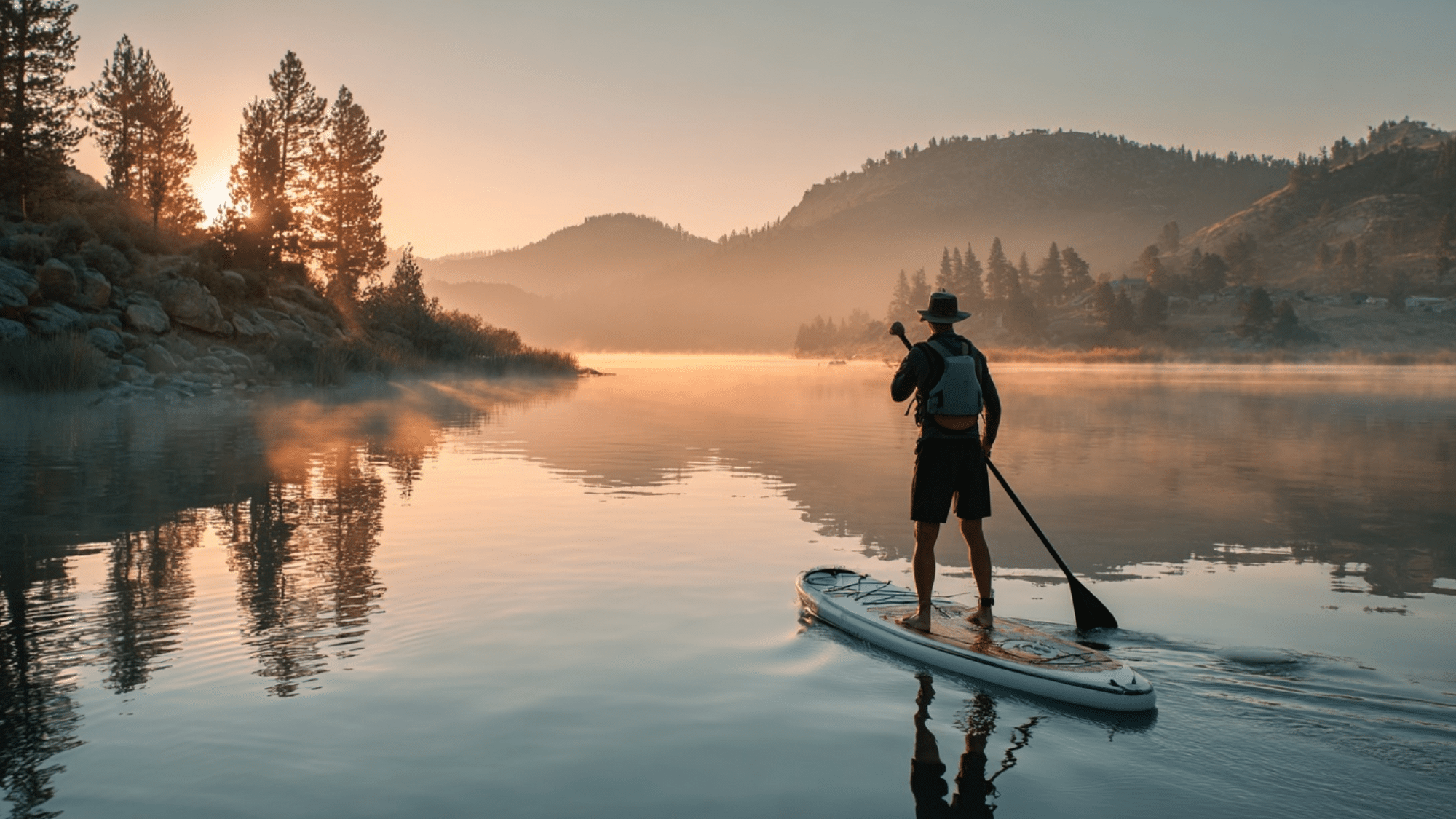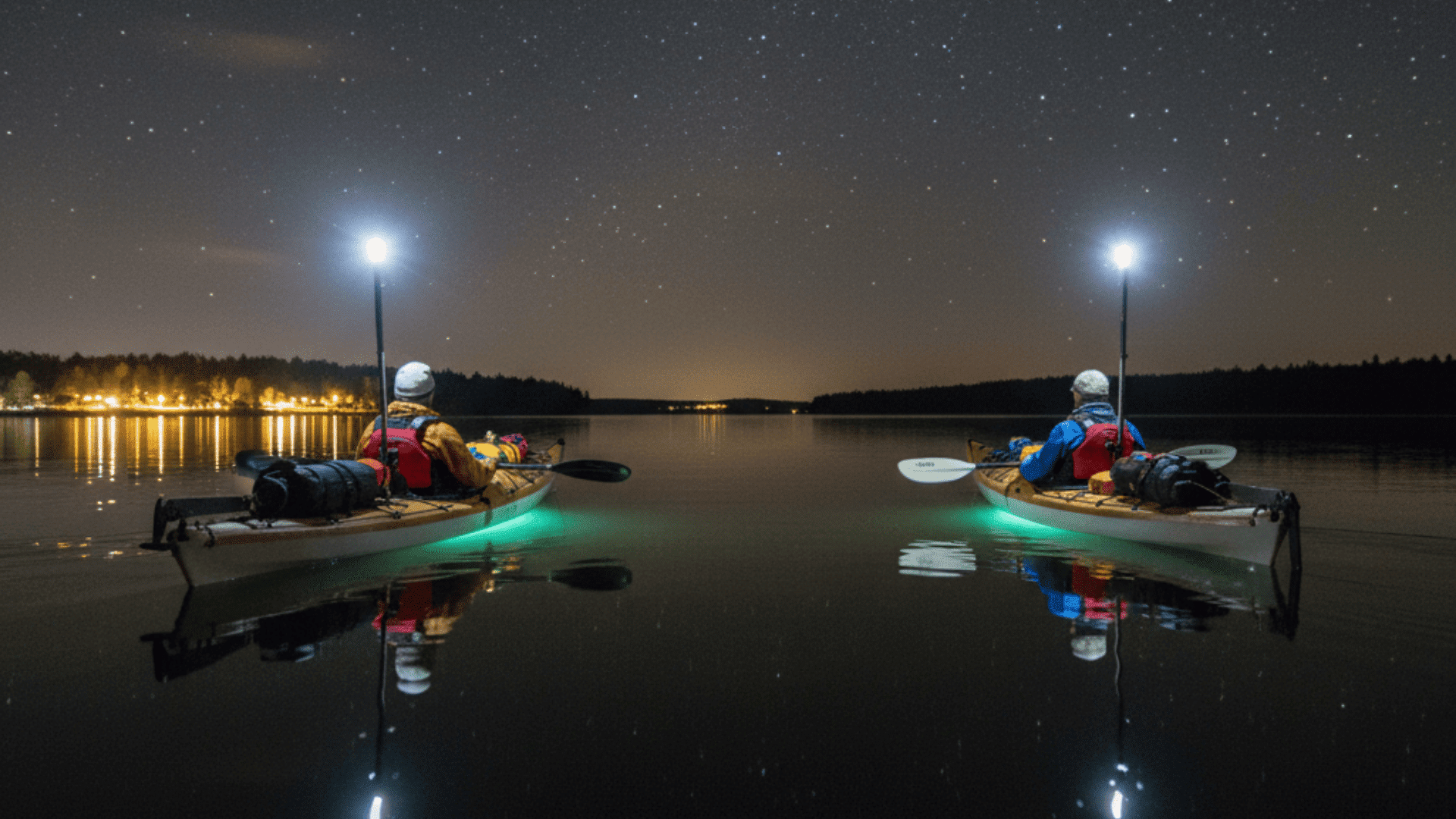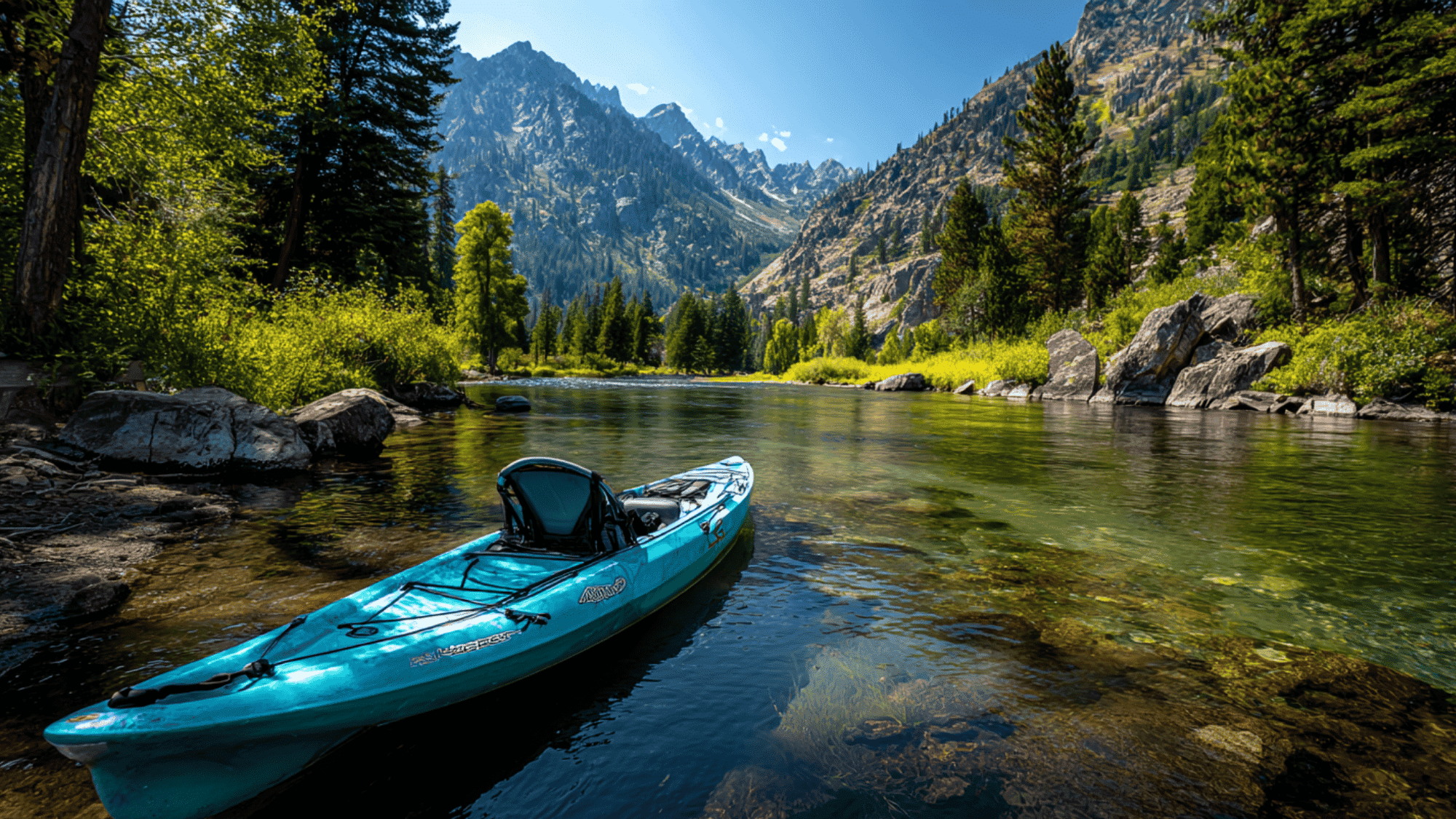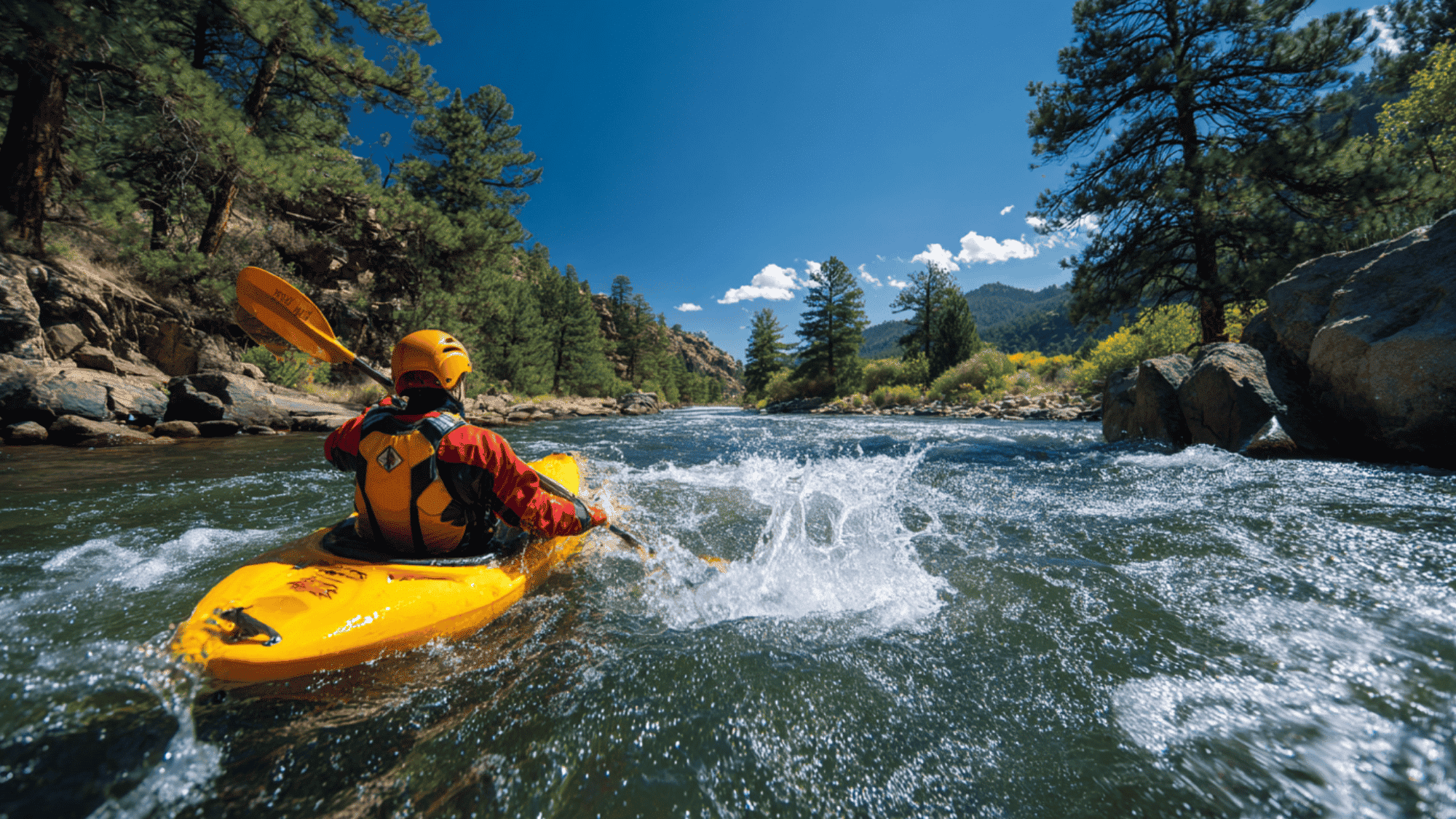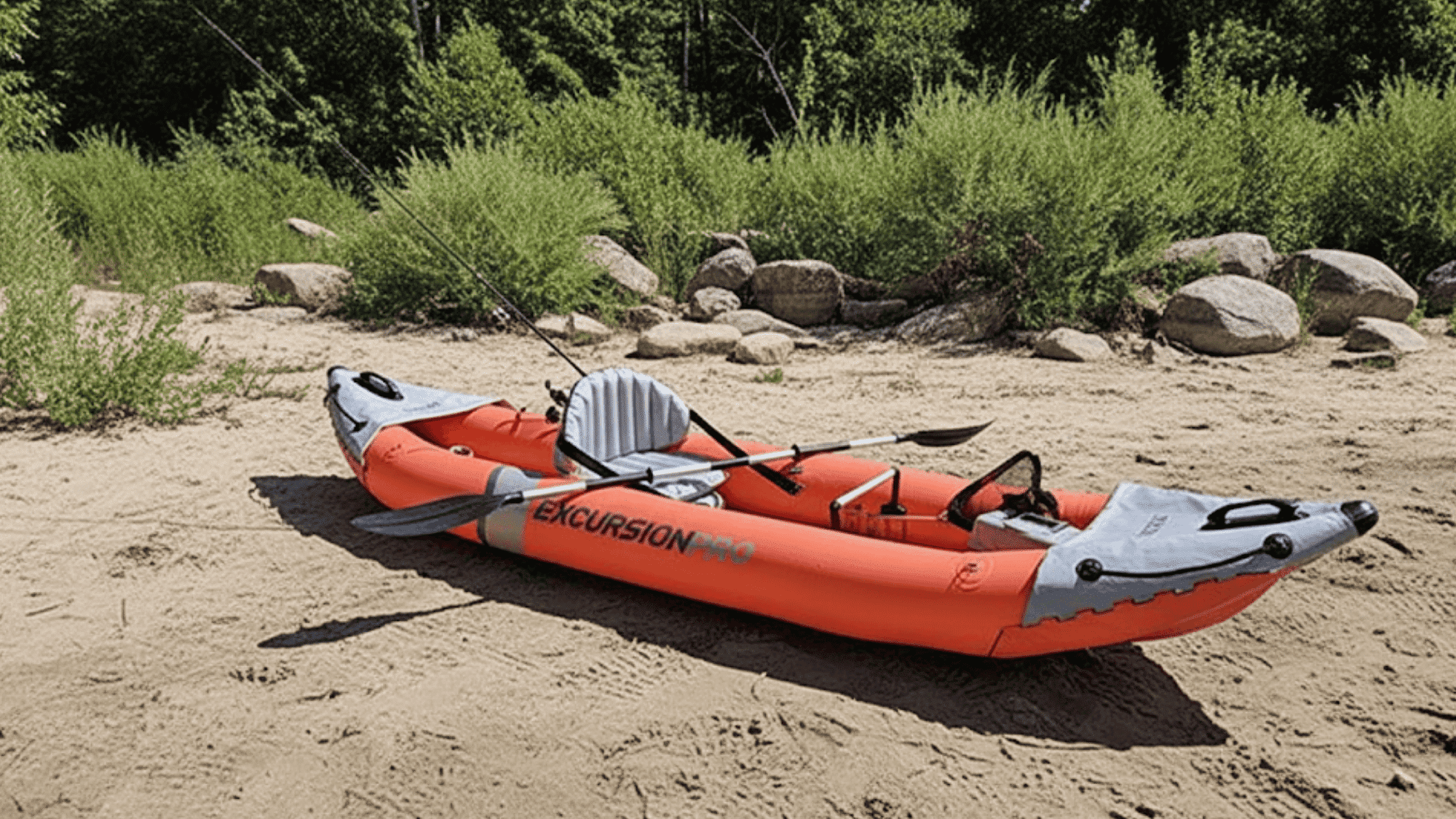Stand-up paddleboarding looks impossible until you try it. Then it becomes addictive.
Every weekend, thousands of complete beginners step onto boards for the first time. Most are paddling smoothly within 30 minutes.
The secret isn’t balance or strength. It’s choosing the right equipment and knowing three simple tricks.
SUP breaks every rule about difficult water sports. No months of practice needed. No expensive coaching required. Just the right board size and basic technique.
The biggest mistake beginners make is buying the wrong board or trying to learn on something too narrow. Get the sizing right and the rest falls into place naturally.
Everything you need to paddle confidently this weekend is in this post.
The Best Beginner SUPs at a Glance
Choose an all-around inflatable between 10’6″ and 11 feet long with a 32-34 inch width. This size gives stability and easy transport while allowing room to improve.
Top picks: Isle Pioneer Pro, BOTE Wulf Aero, Red Paddle Co Ride 10’6, iROCKER All-Around 11′, and Atoll 11′. These consistently work best for beginners. Pick one rated for your weight plus 20-30% extra for gear.
Look for higher PSI ratings and reinforced edges over fancy features. Complete kits should include a paddle, a leash, and a pump. Focus on stiffness and build quality, and you’ll feel steady from your first strokes.
All these boards forgive mistakes while you learn.
Best Inflatable Paddle Boards for Beginners
These boards consistently earn top marks from beginners and experts alike for their stability, build quality, and complete packages.
1. ISLE Pioneer Pro 10’6

The ISLE Pioneer Pro is a flexible, stability-first all-around iSUP that beginners won’t outgrow quickly. Its rigid build and wide platform make first sessions feel planted, while kayak-seat compatibility adds long-term flexibility.
Pros: Very stable 34″ width and near hard board rigidity give beginners a solid, confident feel on the water. Durable build with kayak seat compatibility extends its use as skills grow.
Cons: Slightly heavier than ultra-light boards and bulkier to carry.
| Model | Type | Length | Width | Weight | Capacity | Price Range |
|---|---|---|---|---|---|---|
| Pioneer Pro 10’6 | Inflatable (all-around) | 10’6″ | 34″ | 23 lbs | 325 lbs | ~$715 (sale) |
Specialty: Near–hard-board rigidity with a confidence-boosting 34″ width; great glide and tracking for newcomers.
2. BOTE Wulf Aero 10’4

The Wulf Aero focuses on easy setup and confidence for first-timers. Lightweight with a very stable 34″ width, it’s a wallet-friendly way to start paddling flatwater.
Perfect for new paddlers who want an affordable, straightforward, and steady introduction to SUPing on calm water
Pros: Lightweight, easy to carry, and simple to inflate, making setup effortless for first timers. The 34″ width provides great initial stability.
Cons: Limited weight capacity and fewer premium accessories than pricier models.
| Model | Type | Length | Width | Weight | Capacity | Price Range |
|---|---|---|---|---|---|---|
| Wulf Aero 10’4 | Inflatable (all-around) | 10’4″ | 34″ | 20 lbs | 250 lbs | $559 |
Specialty: Super stable, simple starter kit that’s easy to carry and store.
3. Red Paddle Co Ride 10’6

A premium, long-lasting all-around board that blends beginner stability with smooth glide. It’s the “buy once, keep for years” option thanks to top-tier materials and finish.
A long-term investment in quality and performance, ideal for those who want a “buy once, keep for years” inflatable paddle board.
Pros: Premium construction with great rigidity and glide; stable yet responsive feel suits both beginners and advanced riders.
Cons: High price tag compared to mid-range boards.
| Model | Type | Length | Width | Weight | Capacity | Price Range |
|---|---|---|---|---|---|---|
| Ride 10’6 | Inflatable (all-around) | 10’6″ | 32″ | ~22 lbs | ~220 lbs | from ~$999 |
Specialty: 4.7″-thick, closer-to-the-water feel with recommended rider up to ~100 kg (220 lb).
4. iROCKER All Around 11′
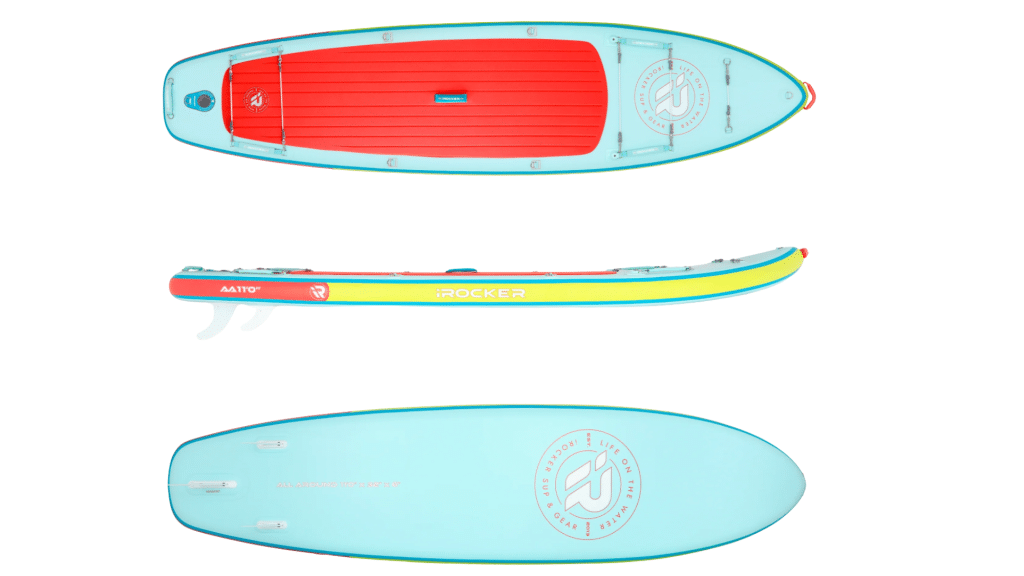
Forgiving and family-friendly, with the capacity to bring kids, dogs, or extra gear. Tracks well for casual cruising while keeping a stable, 32″ stance.
Flexible, family-friendly design that grows with your skill level, equally comfortable for solo rides or adventures with company.
Pros: Great balance between stability and tracking, high weight capacity for extra gear or passengers, and durable triple-layer PVC build.
Cons: Slightly heavier than smaller boards and slower to inflate.
| Model | Type | Length | Width | Weight | Capacity | Price Range |
|---|---|---|---|---|---|---|
| All Around 11′ | Inflatable (all-around) | 11′ | 32″ | 26 lbs | 400 lbs | ~$499 (sale) |
Specialty: High load tolerance and removable 3-fin setup; wide skill range.
5. Glide O2 Retro 10’6
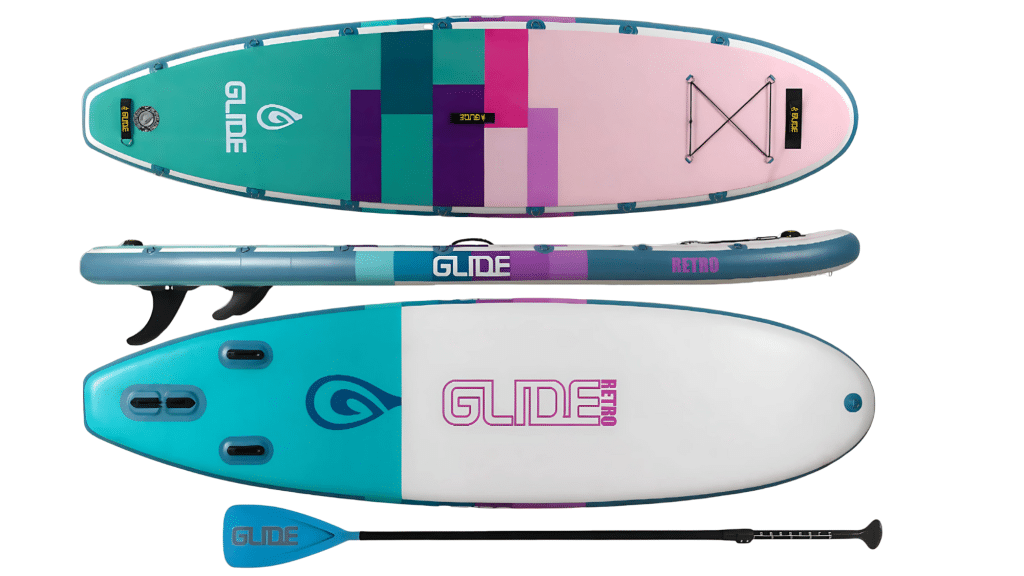
A tough, yoga-friendly cruiser with a comfy full-length deck. Forgiving footprint for casual cruising, fitness, or paddling with a pup.
A durable, do-everything board ideal for relaxed paddling, fitness sessions, and anyone who values comfort and toughness.
Pros: Rugged construction, full-length deck pad for yoga or pets, and smooth cruising stability.
Cons: Slightly narrower than ultra-wide beginner boards, requiring a bit more balance.
| Model | Type | Length | Width | Weight | Capacity | Price Range |
|---|---|---|---|---|---|---|
| O2 Retro 10’6 | Inflatable (all-around) | 10′ | 31″ | 24 lbs | 400 lbs | $799 |
Specialty: Durable build, high PSI rating, and flexible “do-everything” feel.
6. Bluefin Cruise 10’8
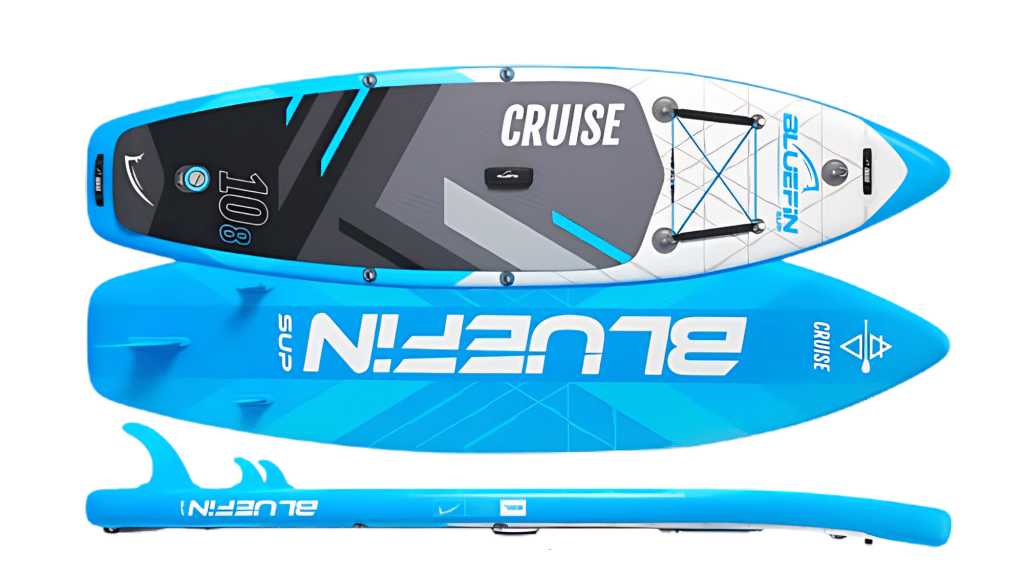
Feature-rich starter package (often with kayak options) that stays steady as skills grow. A great value pick that doesn’t feel cheap on the water.
A budget-friendly, feature-packed option that delivers quality, reliability, and confidence for first-time paddlers.
Pros: Outstanding value with a complete accessory kit and steady handling for all skill levels. Feels solid underfoot and supports ample weight.
Cons: Heavier build due to durable materials; slower turns than smaller boards.
| Model | Type | Length | Width | Weight | Capacity | Price Range |
|---|---|---|---|---|---|---|
| Cruise 10’8 | Inflatable (all-around) | 10’8″ | 32.9″ | 28.8 lbs | 331 lbs | ~$360–$480 (typical) |
Specialty: Full kit value and reassuring stability; commonly priced under ~$400 at times.
7. THURSO SURF Waterwalker 132

Built a bit sturdier for planted, beginner-friendly stability. A strong pick if you want steadiness for longer cruises or added gear.
Offers a sturdy, dependable ride perfect for building confidence on longer cruises or carrying light cargo.
Pros: Very stable and well built, handles added weight or gear with ease, and includes quality accessories.
Cons: Slightly longer and bulkier to transport for smaller paddlers.
| Model | Type | Length | Width | Weight | Capacity | Price Range |
|---|---|---|---|---|---|---|
| Waterwalker 132 | Inflatable (all-around) | 11′ | 32″ | 22 lbs | 160–210 lbs (rec.) | ~$499 (sale) |
Specialty: Rock-solid stance with quality accessories; ideal for confidence building.
8. NIXY Newport G4/G5 10’6
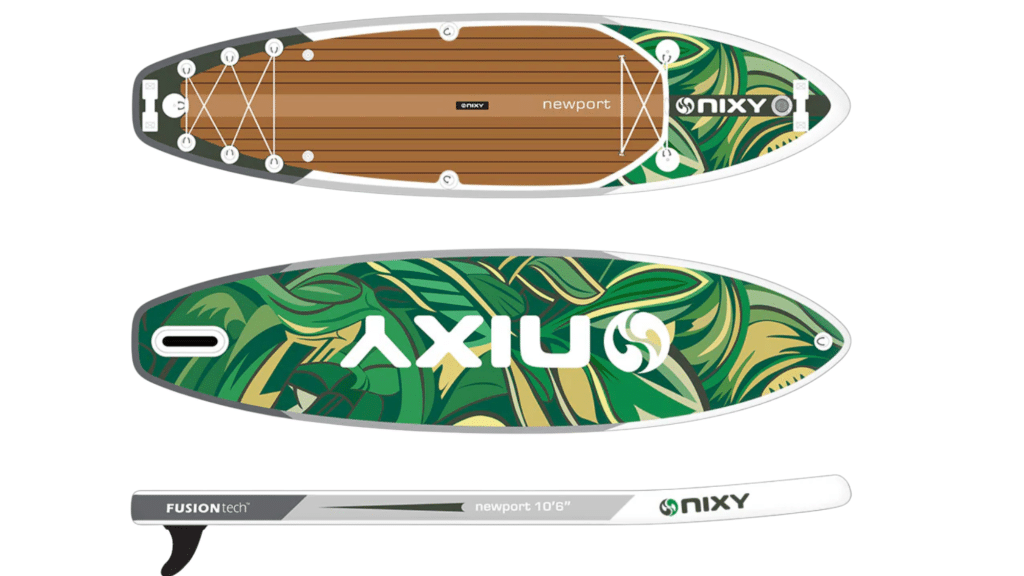
Lightweight yet notably rigid for its class, it is easy to carry and maneuver. Comfortable for casual cruising with quick turns and a tidy deck layout.
Ideal for those who want a light, high-quality board that’s easy to handle without sacrificing performance.
Pros: Lightweight yet stiff, easy to carry, quick to maneuver, and packed with thoughtful design touches.
Cons: Not as wide as ultra-stable beginner boards; may feel slightly more responsive to movements.
| Model | Type | Length | Width | Weight | Capacity | Price Range |
|---|---|---|---|---|---|---|
| Newport 10’6 | Inflatable (all-around) | 10’6″ | 32″ | ~19–21 lbs | 300 lbs | ~$655 (sale) |
Specialty: High stiffness-to-weight and flexible all-around shape
9. GILI Air 10’6
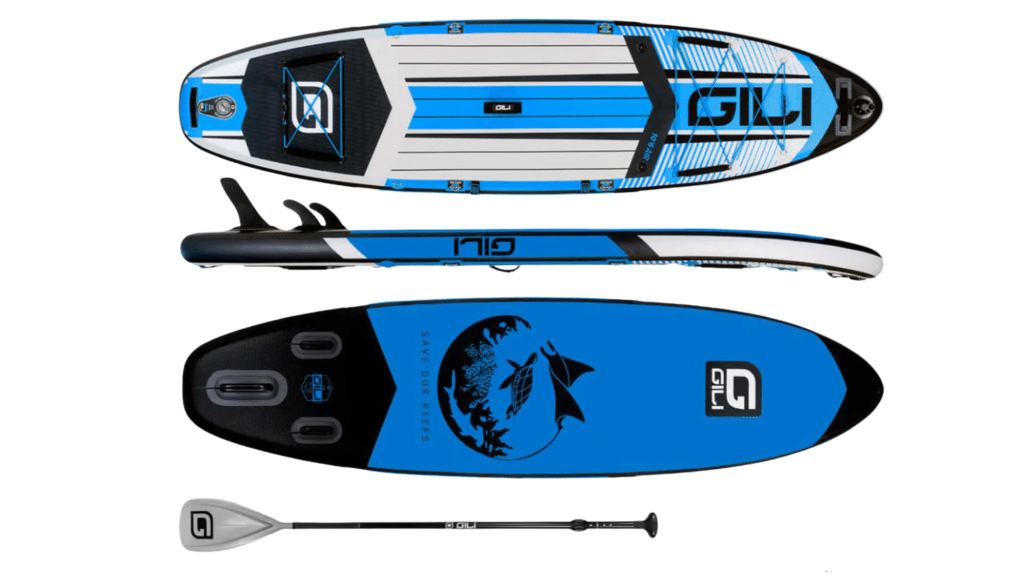
Light, compact, and easy to handle, whcih is great for smaller to average-size beginners. Simple setup, solid stability, and frequent discounts (historically).
A great no-fuss starter board for smaller or average paddlers who want dependable stability and portability.
Pros: Compact, lightweight, and affordable, offering simple setup and steady tracking for beginners.
Cons: Moderate capacity and potential brand availability concerns in 2025.
| Model | Type | Length | Width | Weight | Capacity | Price Range |
|---|---|---|---|---|---|---|
| Air 10’6 | Inflatable (all-around) | 10’6″ | 31″ | 19 lbs | 280 lbs | $395 |
Specialty: Easygoing entry board; availability note (2025): brand operations/warranty may be uncertain,
10. Starboard iGO Zen 11’2

From a respected brand, this refined all-arounder balances stability with quality accessories. Durable construction with a manageable carry weight.
A polished, performance-ready board that blends quality craftsmanship with beginner-friendly control.
Pros: Durable, brand-backed construction with smooth glide and well-balanced stability. Lightweight yet solid feel on water.
Cons: Narrower profile means slightly less stability for complete beginners.
| Model | Type | Length | Width | Weight | Capacity | Price Range |
|---|---|---|---|---|---|---|
| iGO Zen 11’2 | Inflatable (all-around) | 11’2″ | 31″ | 19.6 lbs | ~220 lbs | ~$799 (often on sale) |
Specialty: Brand-backed build quality and polished on-water feel.
11. NRS Jukdo

An ultra-stable, wider platform that helps total beginners feel planted right away. Updated construction with thoughtful details from a trusted paddlesports brand.
Perfect for total beginners seeking maximum stability and reassurance while learning paddling fundamentals.
Pros: Wide 36″ platform for great initial stability, strong materials, and thoughtful updates from a reputable paddlesports brand.
Cons: Heavier and less nimble than narrower boards.
| Model | Type | Length | Width | Weight | Capacity | Price Range |
|---|---|---|---|---|---|---|
| Jukdo | Inflatable (all-around) | 11′ | 36″ | 26.4 lbs | 175–275 lbs (rec. load) | ~$925–$1,195 |
Specialty: Extra width for immediate confidence; modern build and components.
Choosing Your First SUP: Inflatable vs Hard Boards
Most beginners should choose inflatable for practical reasons. Here’s how they compare:
| FACTOR | INFLATABLE SUPS | HARD SUPS |
|---|---|---|
| Storage | Packs into the car trunk | Needs a roof rack or a large space |
| Durability | Bounces off rocks | Can crack on impact |
| Comfort | Soft under feet | Harder surface |
| Performance | Good for beginners | Better glide and precision |
| Learning | More forgiving | Less forgiving |
| Transport | Easy to carry | Heavy and awkward |
| Ideal User | Beginners, casual use | Advanced paddlers |
Key Features for Beginners: All-around shape with 32-34 inch width provides the stability new paddlers need to build confidence. Rounded nose design and balanced rocker help with straight tracking, while basic 2+1 or tool-free center fin systems keep setup simple.
What You Get:
- Inflatable: Paddle, leash, and pump included
- Hard: Board only, buy accessories separately
Inflatables work best for beginners because they’re forgiving and practical for most people’s storage needs.
Why Inflatable SUPs Work Best for Beginners?
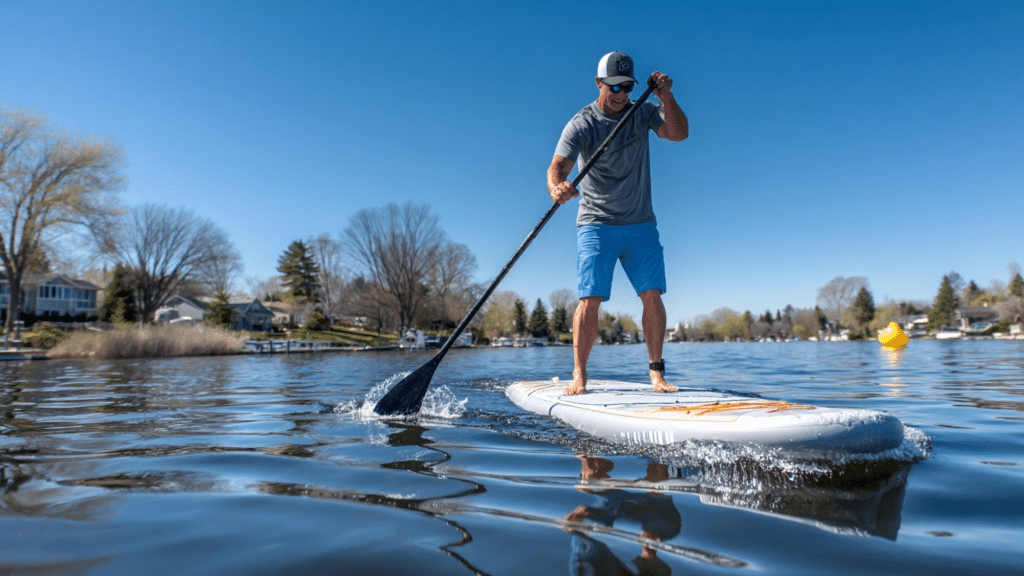
Inflatables consistently top beginner recommendation lists for practical reasons. They fold into a backpack, shrug off beginner mistakes, and provide a softer landing when you fall.
The best models share key features. Stiff drop-stitch construction, reinforced rails, high-quality valves, and smart deck layouts, featuring front bungee storage and multiple carry handles, all contribute to performance.
Premium inflatables feel rigid at higher PSI levels, hold their value longer, and come with better paddles and pumps. Budget options will still be stable and fun, but you’ll notice more flex and basic accessories.
The construction quality makes a huge difference in your experience, so don’t skimp on your first board.
Matching Boards to Your Paddling Style
Your intended use should guide your choice, even as a beginner. Here’s what to look for based on how you plan to paddle:
| PADDLING STYLE | WHAT TO PRIORITIZE | KEY FEATURES TO LOOK FOR |
|---|---|---|
| Yoga Sessions | Extra width and comfort | Soft, uncluttered deck surface |
| Fishing | Gear storage and stability | Accessory mounts, tie-down points |
| Leisure Cruising | Comfort and relaxation | Optional seat attachments, cup holders |
| Travel | Portability and quick setup | Lighter weight, compact packing, fast inflation |
| Family Use with Kids | Safety and ease of learning | Shorter lengths, softer deck materials |
| General Recreation | Multiple uses and forgiveness | All-around shape, stable platform |
Remember, all these remain “all-around” boards at heart, so you can try different paddling styles without needing a specialty board immediately.
Getting the Size Right for Your Body
Here’s your sizing cheat sheet. Most first-time paddlers feel instantly more stable on boards between 10’6″ and 11 feet that are 32-34 inches wide.
Choose a board rated to carry at least your body weight plus 20-30% extra for gear and safety margin.
Heavier or taller paddlers should consider sizing up in both length and width for improved stability. Lighter paddlers and teens can opt for a smaller size for easier handling and transport.
When you’re between sizes, always favor stability first. You can upgrade to a narrower, faster board after gaining experience.
Getting this right from the start saves money and builds confidence faster.
Smart Shopping and Safety Must-Haves
Making smart purchasing decisions and prioritizing safety will save money and keep you safe on the water.
- Set your budget based on how often you’ll paddle
- Mid-range to premium boards justify their cost with better stiffness, including pumps, quality paddles, and solid warranties
- Avoid no-name online listings with vague PSI ratings, thin rails, or missing warranty information
- Always use a properly fitted PFD for safety
- Choose quick-release waist leashes for rivers, ankle leashes for calm lakes • Check wind and tide forecasts before paddling
Smart shopping and proper safety gear make the difference between great paddling experiences and costly mistakes.
Your First Time on the Water: Standing Up Made Simple
Follow these basic steps to get on your board safely and start paddling with confidence.
- Setup: Inflate to recommended PSI and start in knee-deep water, kneeling in the center.
- Paddle grip: Hold paddle with blade angled forward, hands shoulder-width apart.
- Standing: Place feet hip-width apart beside the carry handle, keep knees bent, eyes on the horizon.
- Technique: Use core muscles for power, practice gentle sweep strokes to turn.
- Learning: Falling is normal, so stay relaxed and patient with yourself.
With these basics down, you’ll be ready for longer paddling sessions on the water.
Start Your SUP Adventure Today
Stand-up paddleboarding opens up a world of water activities that’s closer than you think. With the right board, proper sizing, and basic technique, you’ll be confidently checking out lakes, rivers, and coastlines in no time.
The boards we’ve recommended have helped thousands of beginners fall in love with this incredible sport, and the skills you’ll learn transfer to any water condition.
Remember, every expert paddler started exactly where you are now – the only difference is they took that first step onto the water.
Your perfect paddling experience starts with choosing the right board and getting out there.


